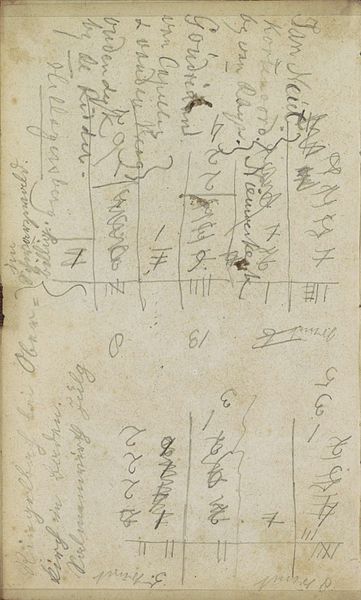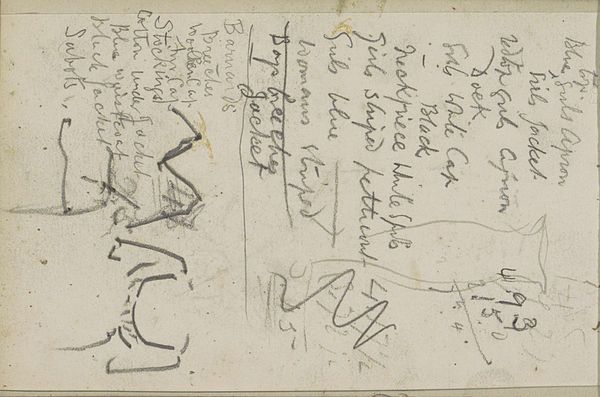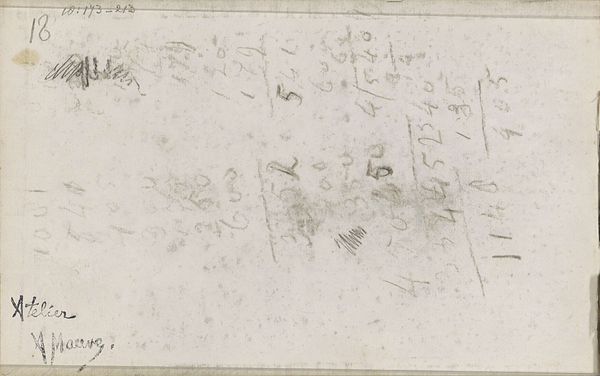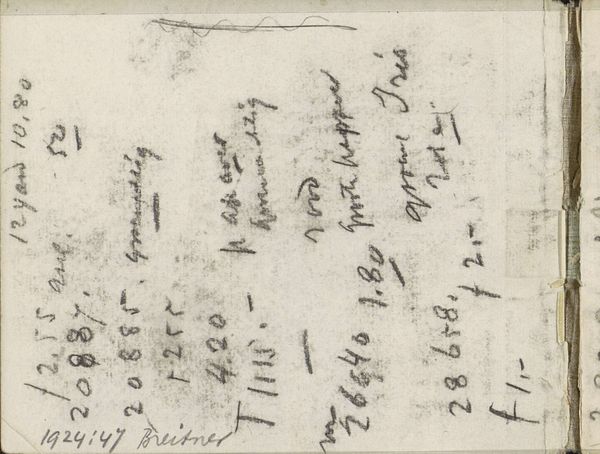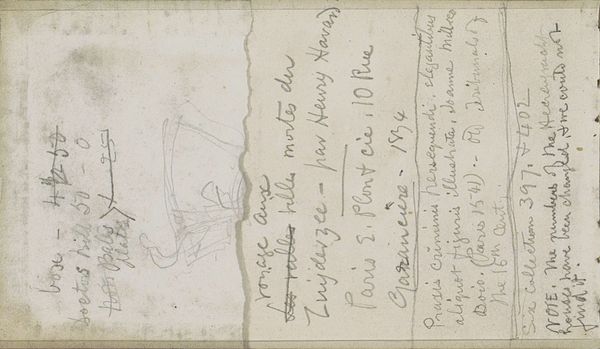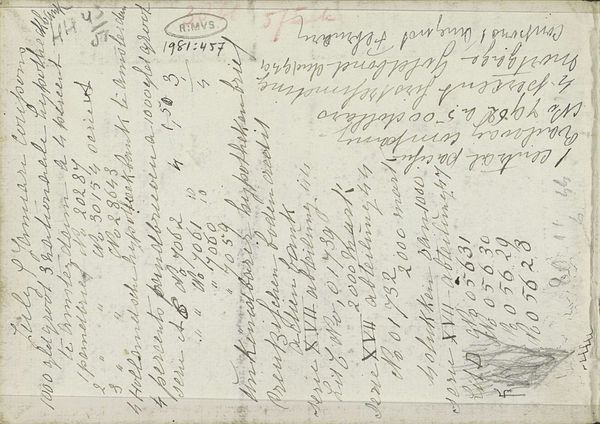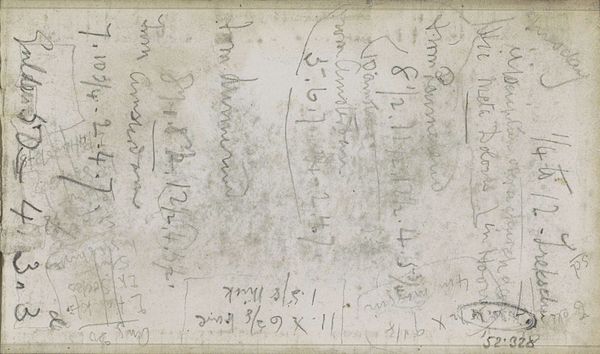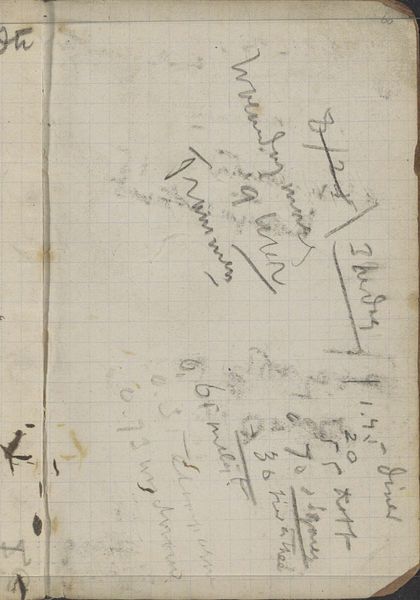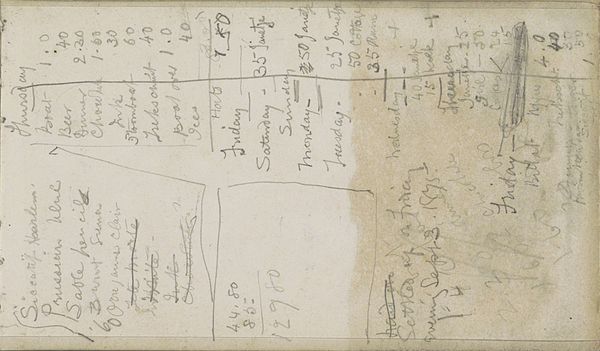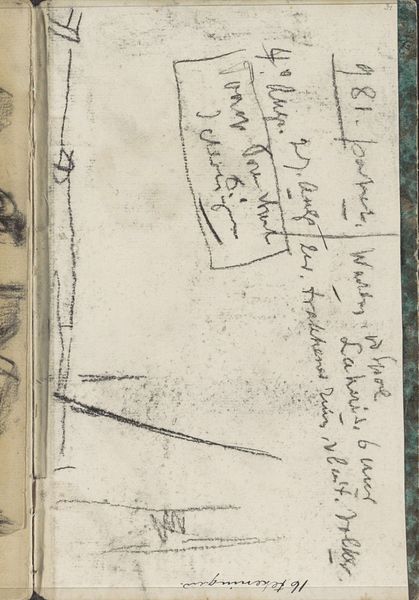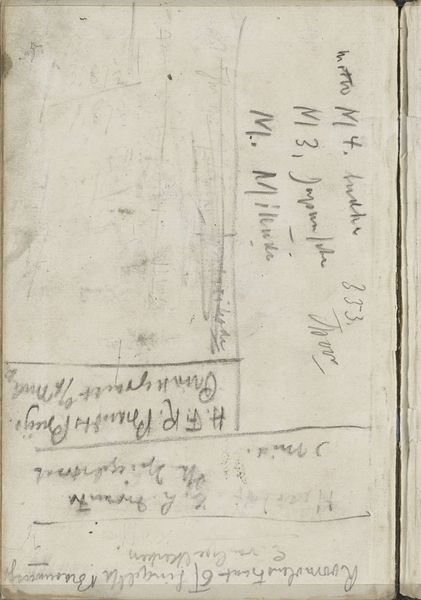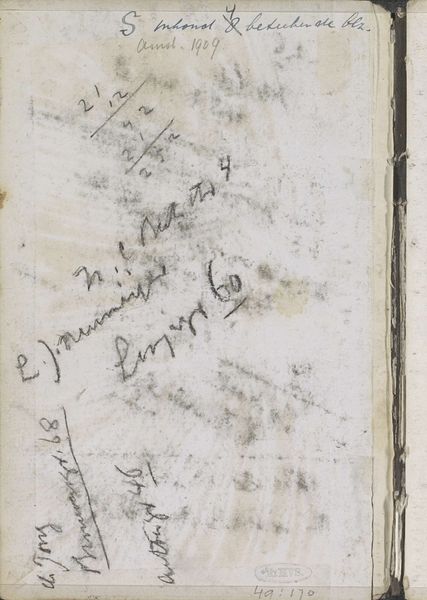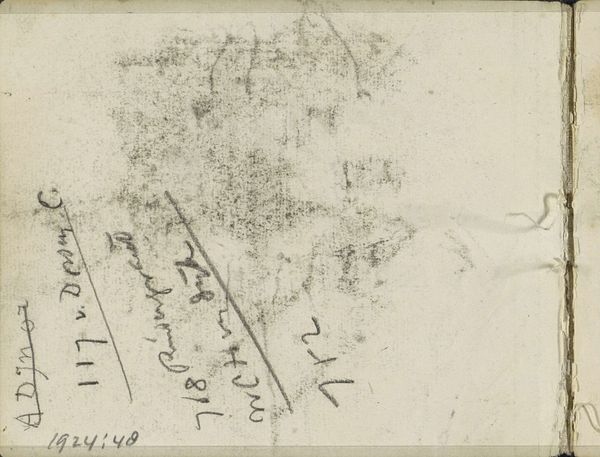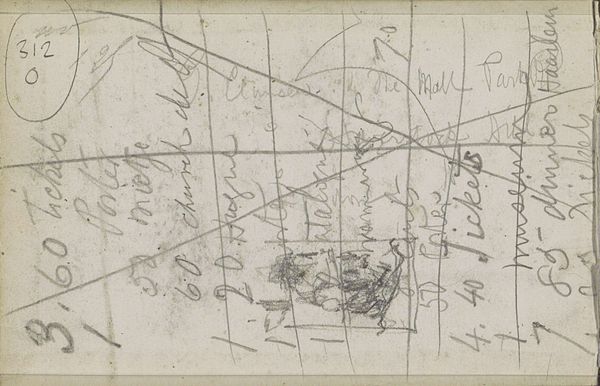
drawing, paper, dry-media, ink, pencil, graphite
#
drawing
#
paper
#
dry-media
#
ink
#
pencil
#
graphite
#
monochrome
Copyright: Rijks Museum: Open Domain
Curator: This work by George Clausen is titled "Reisnotities en berekeningen," or "Travel Notes and Calculations," and dates from 1875. It's executed with graphite, pencil, and ink on paper. My first impression is one of delightful, almost frantic, energy. It's chaotic, yet contained. Editor: It does evoke a sense of fleeting moments captured in ink. It feels almost clandestine, as if we are viewing a page from a personal journal not meant for public consumption. This piece offers a glimpse into Clausen's daily transactions, which allows a reflection on the everyday experience of nineteenth-century travel and how that reflects his identity. Curator: Exactly! Consider the materials themselves – relatively inexpensive paper and readily available graphite and ink. These suggest the ephemerality of the notes, made to fulfill immediate need rather than be saved or preserved as some precious artwork. One could also wonder where Clausen secured the materials? Did he value the brands or the simple materiality of the tool? Editor: That raises some interesting questions regarding access and privilege within the context of nineteenth-century Europe. This intimate access point could become a narrative surrounding commerce and class that might shed new light on the history of imperialism and who benefited during this era. What costs do these supposed ‘daily’ and seemingly unimportant interactions ultimately hold? Curator: The calculations especially fascinate me. Were they sketching out financial deals, logistics of transport or even sketches of his expenses? This could tell us much about the process of art production. I wonder about his potential financial freedom, whether his supplies reflected a privileged position, or the struggle for artistic success. Editor: Absolutely. What does it mean for marginalized communities, at the time, to acquire paper to make this work possible, when other cultures or minority people are suffering? What about colonial implications and forced assimilation? Curator: Yes, but focusing also on production offers insight to labor relations of the time and offers opportunity to re-think the labor behind production to highlight human rights in the global scale. The simplicity, to me, shows artistic labor, it displays effort of travel from place to place. Editor: Both positions seem intertwined, and a study like that could lead to some important conversation. Curator: Indeed! Understanding artistic materiality is not mutually exclusive with understanding sociopolitical factors but rather should exist in collaboration to paint the best possible art history. Editor: Well said. The implications embedded in each mark and calculation are quite profound in the context of Clausen’s Europe, even if subtle and personal in subject matter.
Comments
No comments
Be the first to comment and join the conversation on the ultimate creative platform.
